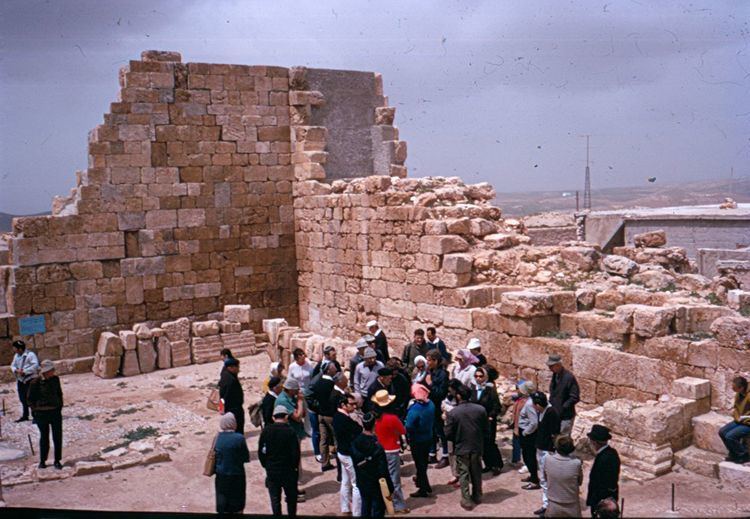Excavation dates 1934, 1969-70. | Founded 4th–5th century CE | |
 | ||
Similar Anim synagogue, Beth Alpha, Hamat Tiberias, Ancient synagogue, Rockefeller Museum | ||
The Eshtemoa Synagogue, located 15 km south of Hebron in as-Samu, West Bank, refers to the remains of an ancient Jewish synagogue dating from around the 4th–5th century CE.
History
Eshtemoa, identified as modern as-Samu, was an ancient city named in the Bible (Joshua 21:14). During Roman and Byzantine period, Eshtemoa was described as a large Jewish village.
The remains of the synagogue were identified by L. A. Mayer and A. Reifenberg in 1934. In 1969–70, a full excavation of the site revealed that the building occupied the most prominent site in the village. It was built in "broadhouse" style without columns and measured 13.3 m (44 ft) by 21.3 m (70 ft). Entry was by any of three doors along its eastern side and one of the three niches recessed into the northern wall functioned as the Torah Ark. The building housed a mosaic floor and displayed external ornamental carvings. Four seven-branched menorahs were discovered carved onto door lintels and one of them is displayed in Jerusalem's Rockefeller Museum.
After the Muslim conquest, the synagogue was converted into a mosque and a mihrab was added. The western wall is still standing to a height of 7 m (23 ft). Many architectural elements of the building have been reused in the modern village.
